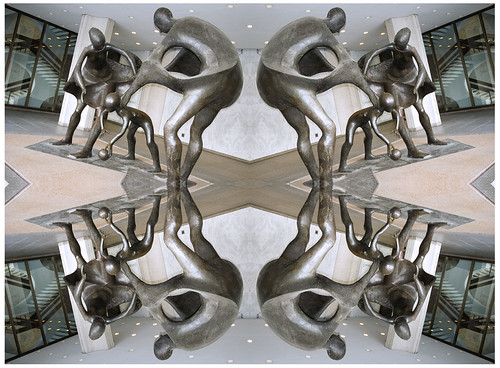Department of “Wow. They have Nick Cave Dolls? I want one”, sung in one's best Bongwater voice, circa
Any-who, excerpts from a fascinating tale of the origins and historical significance of the legendary figure, Stagger Lee published a few years ago in the Guardian.
Guardian Unlimited - Godfather of Gangsta
In the red-light district of St Louis in 1895, a pimp shot a man dead in an argument over a hat. The ballad telling the story has been recorded by hundreds of bluesmen and jazzers - and even the Clash. It also helped create modern-day rap. Cecil Brown tells the remarkable tale of Stagolee ....A newspaper account also described Stagolee as walking over to the dying man still holding on to the bar and snatched his hat from Lyons's hand, put it on his head, and walked out “coolly” into the night air.
The murder had serious political consequences. Lyons, it turned out, was a staunch Republican, as were nearly all of St Louis's 25,000 black people. Lyons's stepmother, Marie Brown, owned the famous Bridgewater saloon. Her son-in-law, Henry Bridgewater, was reputed to be the richest black man in St Louis. Lyons belonged to this powerful clan loyal to the Republican party, which had freed the slaves. A new generation, represented by Stagolee, was anxious to vote for the Democrats. Stagolee had gained the support of the Democrats and so was hated by most of the black bourgeoisie, who were represented by Billy Lyons.
In the 1890s in St Louis, black people sought political protection with their right to vote. Both the Republican and the Democratic parties thought they could win if they got the black vote. The majority of black St Louisans voted Republican, but during the Republican convention, in the summer of 1896, many - unhappy that the national Republican party ignored their interest - broke with the party. This break owed much to the black pimps in St Louis. Under the guise of “sporting” clubs, frequently called the 400 Clubs, pimps, saloon-keepers, and gamblers exerted voting power for the Democratic party. Some saloon-keepers represented the “unofficial” Democratic party.They took him to the courthouse
Judge Murphy sat on the bench
An' the first one to put her can in a chair
Was Stack-o-Lee's lovin' wench
Down at the trial, down at the trial of Stack-o-Lee.Many of the figures in the ballad - Judge Murphy, Stagolee's defence lawyer Nat Dryden, Stagolee's wife - were well known figures in the area. Other versions of the ballad make references to historical places and people, like St Louis Chestnut Valley, Lillie Shelton, and bartenders Tom Scott and Frank Boyd. We can assume, therefore, that the hero Stagolee who is the centre of the poem is a reference to the real man Lee Shelton.
Shelton's white lawyer, Dryden, may have been brilliant, but he also was a bohemian with an opium addiction. In the first trial, Dryden got Stagolee off with a hung jury. After two years in the courts, at the retrial in 1897, with a new judge and in the absence of Dryden, Stagolee was sentenced to 25 years in the Jefferson penitentiary. After being released by the Democratic powers that be, he was out for a few years and then returned for pistol-whipping another man. He died in the state prison in 1912, aged 46.

Murder Ballads
listen to excerpts at Amazon
link via Feministe
Parenthetical note, of the 10 versions of Stagger Lee currently in my library, Nick Cave's is probably my second favorite to (Mississippi) John Hurt's version.
Update: via Vidiot , here is a list of 218 versions of the song, Stagger Lee.
Tags: Nick Cave










































